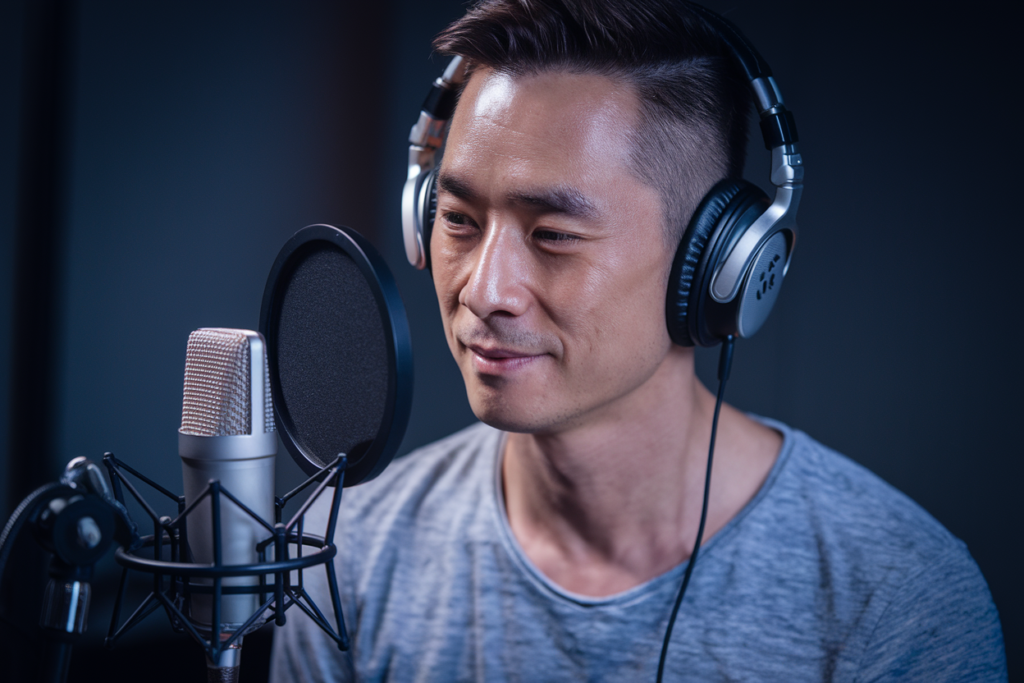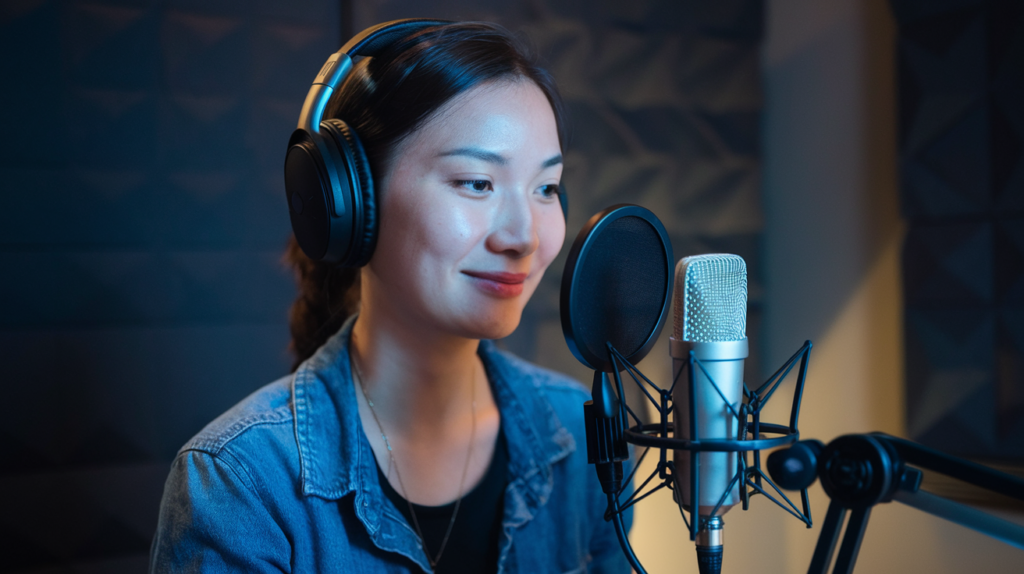Key Takeaways
- Standard Mandarin as the Foundation: Standard Mandarin, or Putonghua, serves as the official language of China and is essential for effective communication across diverse regions.
- Tonal Complexity: Mandarin features four primary tones that significantly influence meaning, while other dialects like Cantonese have more complex tonal systems with six to nine tones.
- Regional Variations Matter: Understanding regional accents and dialects enhances communication skills and cultural appreciation, as local pronunciations can alter meanings drastically.
- Historical Context: The development of Standard Mandarin aimed at unifying various Chinese dialects to promote national identity, with pronunciation standardized based on the Beijing dialect in the mid-20th century.
- Importance in Education and Media: Mastering Standard Mandarin improves language proficiency in educational contexts and ensures clarity in media production, making it crucial for professionals in voiceover or broadcasting fields.
Ever wondered what the standard Chinese accent really is? With so many dialects and regional variations, it can be tough to pin down. But understanding this aspect of the Chinese language is crucial if you’re looking to communicate effectively or dive deeper into its rich culture.
Overview of Chinese Accents
Chinese accents encompass a variety of regional dialects, each with unique phonetic characteristics. The most prominent among these is Mandarin, often regarded as the standard accent. When you speak or hear Mandarin, you’re likely encountering the pronunciation and tones that make it the official language in China.
Mandarin boasts four main tones, which significantly impact meaning. For instance, the word “ma” can mean mother, hemp, horse, or scold depending on its tone. This tonal system distinguishes Mandarin from other Chinese dialects like Cantonese or Hokkien.
Cantonese also holds significant importance in China and abroad. Spoken mainly in Guangdong province and Hong Kong, Cantonese features six to nine tones—depending on local variations—which adds complexity to its pronunciation.
Regional accents affect not only how words are pronounced but also intonation patterns and vocabulary usage. For example, people from northern China might have different pronunciations for certain consonants compared to those from southern regions.
Understanding these nuances enhances your appreciation of Chinese culture and improves communication skills. Whether you’re engaging with native speakers or exploring voiceover opportunities in this linguistic landscape, recognizing these accents fosters greater connection and clarity.
Understanding Standard Mandarin
Standard Mandarin serves as the official language of China and is crucial for communication among speakers from different regions. Knowing its characteristics enhances your understanding of Chinese culture and improves interaction with native speakers.
Historical Background
Standard Mandarin, also known as Putonghua, emerged in the early 20th century. Its development aimed to unify the various regional dialects across China. The focus was on promoting a common language that everyone could understand, fostering national identity and cohesion. During the 1950s, efforts intensified to standardize pronunciation based on the Beijing dialect, which became the foundation for teaching and broadcasting. This historical context highlights why Standard Mandarin retains significant importance in today’s society.
Linguistic Features
Standard Mandarin possesses distinctive linguistic features that set it apart from other Chinese dialects. Primarily characterized by four tones—high level, rising, falling-rising, and falling—the tonal system plays a vital role in conveying meaning. For instance, “ma” can mean mother or horse depending on the tone used.
Additionally, Standard Mandarin has a simplified phonetic structure compared to regional dialects like Cantonese or Wu. It features fewer initials and finals in syllables which aids clarity during speech. Recognizing these tonal nuances becomes essential when exploring opportunities such as voiceovers or engaging with voice talent who perform in this accent. Understanding how pronunciation varies can enhance your ability to connect with audiences effectively while ensuring accurate delivery of content.
By grasping these aspects of Standard Mandarin, you pave the way for deeper cultural appreciation and improved communication skills—essential tools whether you’re looking to engage native speakers or explore potential collaborations within voiceover projects.
Comparison with Other Chinese Dialects
Understanding the standard Chinese accent involves examining its relationship with other dialects. Mandarin serves as the foundation, but regional variations add layers of complexity.
Regional Variations
Chinese dialects are diverse, each offering unique linguistic features. Cantonese stands out with six to nine tones, depending on the region, which can confuse learners accustomed to Mandarin’s four tones. Wu dialects, like Shanghainese, differ significantly in pronunciation and vocabulary from Standard Mandarin. Min dialects include Hokkien and Teochew, often featuring distinct intonation patterns. Recognizing these variations enhances your ability to communicate effectively across regions and boosts your appreciation for China’s rich cultural tapestry.
Common Misconceptions
Many assume that speaking Mandarin automatically means you understand all Chinese dialects—this isn’t true. While Standard Mandarin is widely understood, local accents can alter meanings and pronunciations significantly. For instance, a phrase in Mandarin may sound entirely different when expressed in Cantonese or another regional variant due to tonal shifts or differing vocabulary choices. This misconception could hinder effective communication if you’re engaging with native speakers or exploring opportunities as a voice artist in various contexts within China.
Understanding these nuances not only supports better communication but also enriches your engagement with Chinese culture—whether you’re preparing for a voiceover project or simply interacting with friends from different backgrounds.
Importance of Standard Chinese Accent
Understanding the standard Chinese accent plays a crucial role in effective communication and cultural appreciation. It enhances your ability to connect with native speakers, making conversations smoother and more meaningful.
In Education
The standard Chinese accent is essential in educational settings. Learning Mandarin as a second language often emphasizes this accent since it represents the official pronunciation of the language. Mastering the nuances of Standard Mandarin improves not only speaking skills but also listening comprehension. Students who grasp this accent tend to perform better on tests and exams that assess language proficiency, including those for business or travel purposes.
In Media and Communication
In media and communication, the importance of a standard Chinese accent cannot be overstated. Professionals working in voiceover or broadcasting fields benefit from clear articulation that aligns with Standard Mandarin. Whether you’re producing educational content or engaging in commercial projects, using this accent ensures that messages resonate well with diverse audiences across China. Voice actors aiming for authenticity should prioritize training in Standard Mandarin to deliver performances that captivate listeners while maintaining clarity and professionalism.
Everyone involved in voiceover work knows that navigating regional accents can lead to misunderstandings, especially when targeting broader markets. Focusing on a standard accent fosters inclusivity, allowing you to reach various demographics effectively while enhancing your overall impact within the industry.
Recognizing these elements positions you advantageously within both educational contexts and professional environments related to voiceover work or media production.
Conclusion
Understanding the standard Chinese accent is key to effective communication and cultural appreciation. By mastering Standard Mandarin, you not only enhance your speaking and listening skills but also position yourself for success in educational and professional environments.
Recognizing the nuances of regional accents enriches your interactions with native speakers while broadening your grasp of Chinese culture. Whether you’re pursuing voiceover opportunities or simply engaging with friends, a solid foundation in the standard accent fosters clarity and connection. Embrace this journey to navigate the complexities of Chinese dialects confidently and enjoyably.
Frequently Asked Questions
What is the standard Chinese accent?
The standard Chinese accent, known as Standard Mandarin or Putonghua, serves as the official language of China. It promotes effective communication among speakers from different regions and is based primarily on the Beijing dialect.
Why is understanding accents important in Chinese?
Understanding accents enhances communication skills and fosters a deeper appreciation of Chinese culture. It helps learners recognize pronunciation, intonation patterns, and vocabulary variations across different dialects.
How many tones are in Standard Mandarin?
Standard Mandarin has four main tones that significantly affect meanings of words. Mastery of these tones is crucial for effective communication and comprehension within the language.
What distinguishes Cantonese from Mandarin?
Cantonese features six to nine tones compared to Mandarin’s four. This tonal complexity can confuse learners, making it essential to understand regional differences for clearer communication.
How did Standard Mandarin emerge?
Standard Mandarin was established in the early 20th century to unify various regional dialects into a common language. Efforts intensified in the 1950s to standardize its pronunciation based on the Beijing dialect.
Can understanding Mandarin guarantee comprehension of all dialects?
No, knowing Standard Mandarin does not ensure comprehension of all Chinese dialects. Local accents can alter meanings and pronunciations, necessitating additional learning for clarity in diverse contexts.
Why is mastering the standard accent beneficial for education?
Mastering the standard accent improves speaking and listening skills, leading to better performance on language proficiency tests. It’s essential for clear articulation in educational settings and professional environments.
How does a standard accent impact voiceover work?
A standard accent ensures clear articulation that resonates with diverse audiences across China. Focusing on this accent fosters inclusivity and reduces misunderstandings in media production and voiceover projects.







